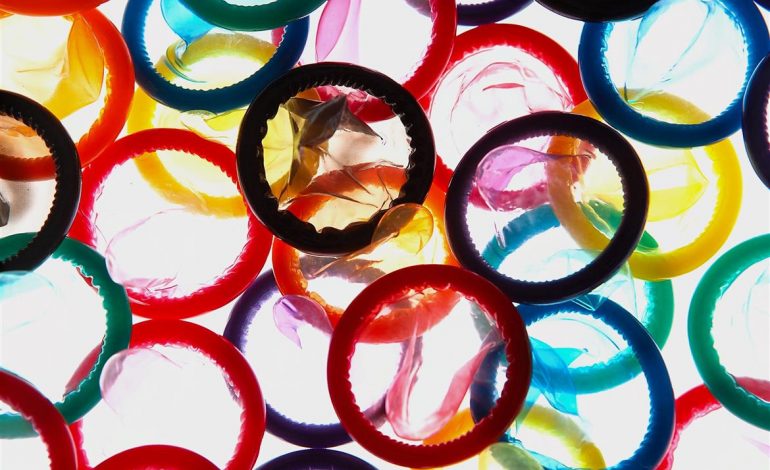
Don’t shy away from the topic of condoms, as this unglamorous contraceptive is one of the most effective methods of preventing sexually-transmitted diseases (STDs) and unplanned pregnancies.
There tends to be an unfair stigma against discussing condoms, let alone using them.
Once, while attending a talk on sexual health, a condom was passed around for the participants to get a closer look.
To my amusement, one horrified participant barely touched the new unused sample condom before tossing it on, sending it flying to the ground.
It turns out that the participant had never touched a condom before, new or used, and was surprised to feel an oily film on the sample.
The reason condoms are so highly espoused and recommended by sexual health experts is because they are an affordable and highly effective way of preventing unplanned pregnancies, and more critically, STDs.
Condoms, as you know, come in a shape that fits a man’s penis and is worn like a sort of glove, containing unwanted semen within it and keeping out vaginal fluids.
According to Planned Parenthood, a leading non-profit reproductive health organisation in the United States, condoms are 85% effective in real life, i.e. out of 100 women who have intercourse using a condom, only about 15 will get pregnant.
As for protection against STDs and sexually transmitted infections (STIs), the US Centers for Disease Control and Prevention (CDC) point to clinical trials and research that consistently indicate that the use of rubber condoms (in particular) are highly effective in stopping pathogens from being passed on to another person through sex.
Common features of condoms
Although we are discussing male condoms, ladies, knowledge is power; you stand to gain by knowing several common things about condoms on the market:
• They are made of latex, lambskin, or even plastic.
The most common material used for condoms is latex, hence, condoms are often nicknamed “rubbers”.
Unfortunately, some people are allergic to latex, so rather than risk a night of intimacy turning into a nightmare of itchiness, you can turn to condoms made from polyisoprene or polyurethane, types of plastics that are good substitutes for natural rubber.
There are also lambskin condoms, which are processed from the real intestines of lambs. They can prevent pregnancies, but not STDs.
• Some condoms are lubricated.
A brand new condom comes packaged in a sealed, air-tight packet, partially to prevent the thin film of lubrication applied to the condom from drying out.
The lubrication is essential to keep the condom from breaking, and if you choose non-lubricated condoms, you’ll still want to apply a proper lubricant (not Vaseline) for more comfortable use.
• Some condoms have spermicide.
In keeping with its purpose of preventing pregnancies, condom manufacturers have created versions that are coated with spermicide.
However, the effectiveness is questionable, and it’s better to consult your doctor for proper family planning strategies.
• Some condoms are textured.
For a more “pleasurable experience”, there are condoms that are not only lubricated, but also studded or ribbed.
• Some condoms are durian-flavored.
Yes, you read that correctly. Presumably, this is a gimmick to attract durian lovers to try out condoms.
In any case, just like glow-in-the-dark condoms and many other types of novelty condoms, read the labels to ensure they are manufactured by reputable condom brands before buying.
Not all novelty condoms found in sex shops safeguard against STDs.

How to use a condom properly
We know that condoms are not 100% effective, as accidents like breakage can happen or it is not used correctly.
In order to maximise condom use, here some are some tried-and-true tips to follow:
• Ensure that you are using the right size.
A condom that is the right fit won’t slip or feel too tight, and will do a good job.
In general, condoms are sold in sizes ranging between 6.5-8.5 inches (16.5-21.6cm) in length, as well as various widths.
They are also often classified as small, medium large, and even extra large.
And then there are those with cheeky names like “anaconda” or “king kong”, but those are usually marketing gimmicks – extra large genitals are quite uncommon!
If you are new to condom buying, it is recommended to measure the length of your partner’s erect penis.
This is not an awkward thing to do, as buying the right size will save you money and avoid embarrassment.
• Check the expiry dates and be careful when opening the package.
Condoms closer to their expiry date lose their efficiency and will be prone to breakage.
If you store condoms for more than six months in our hot and humid weather, it is best to check them for leaks in the packaging and freshness.
Be careful not to tear the condom as you are opening the foil, and discard if it is sticky or brittle.
• Put it on right and keep it on the whole time.
A condom must be applied to an erect penis.
Place the unrolled condom over the top of the penis with the tip facing upward.
The rim should face outward, enabling you to roll it easily down the penis shaft.
Gently pinch the tip of the condom to create a small space for semen collection, then roll the condom all the way down the shaft with your other hand.
• If it breaks, use a new condom.
Stop immediately, carefully pull out and put on a new one.
• Prevent spillage.
When the penis loses its erection (at any time, but most commonly after ejaculating), carefully pull out without spilling any semen or losing the condom inside the vagina, as this will defeat the purpose of using a condom.
Reducing the awkwardness
From a health point of view, there isn’t really any good excuse for not using a condom.
Believe it or not, sometimes the reasons why people choose not to use condoms can be as simplistic as not knowing how to use it properly, it seeming unnatural, or even being too embarrassed to buy one.
Here are a couple of tips to tackle those issues:
• Buy online or from a pharmacy.
It’s understandable to want to avoid the potentially embarrassing situation of paying for condoms at a convenience store.
Luckily, technology has made our lives easier by making many products available for purchasing online, with express shipping options.
Buying from a pharmacy might be a more forgiving experience as well, as staff there should be used to such purchases, and hopefully, less judgemental of those who buy them.
But at the end of the day, remind yourself that buying condoms is a right and there is nothing wrong with buying it with confidence.
• Practice, practice, practice.
It’s always good to practice unrolling condoms if you’ve never used one before or just getting started with them.
Unless the condoms themselves are designed with a space to collect semen, it’s also good to know how to pinch and hold the tip correctly as you unroll.
Knowing all this and being comfortable with condom usage builds more confidence when in bed, and will allow you and your partner to bond.
Finally, always store unopened condoms in cool, dry storage, away from high temperatures and direct sunlight.
While it might be a cliche to hear people say that they store their condoms “in the sock drawer”, that is probably one of the best places to help prolong the shelf life of your condoms.
But don’t forget to use them!
Datuk Dr Nor Ashikin Mokhtar is a consultant obstetrician and gynaecologist, and a functional medicine practitioner. For further information, email starhealth@thestar.com.my. The information provided is for educational and communication purposes only and it should not be construed as personal medical advice. Information published in this article is not intended to replace, supplant or augment a consultation with a health professional regarding the reader’s own medical care. The Star, a member of the Asia News Network and partner of the Inquirer, does not give any warranty on accuracy, completeness, functionality, usefulness or other assurances as to the content appearing in this column. The Star disclaims all responsibility for any losses, damage to property or personal injury suffered directly or indirectly from reliance on such information.










































